Red Dragon Rainbow Fish
50 in stock (can be backordered)
Original price was: $15.00.$11.99Current price is: $11.99.
Juveniles and females are olive gray with silver iridescence. At about 2 inches in length the males take on a deep red-orange coloration with gold iridescence. Males also develop a much higher body.
According to Tropical Fish Magazine “Juveniles and females are olive gray with silver iridescence. At about 2 inches in length the males take on a deep red-orange coloration with gold iridescence. Males also develop a much higher body.”
Common Names: Red rainbowfish, salmon rainbowfish, Irian red rainbowfish, New Guinea rainbowfish, etc.
Type Locality: Irian Jaya Indonesia: Lake Sentani
Range: Irian Jaya Indonesia: Lake Sentani
Taxonomic Troubles: This is the original name.
Size: 15 cm TL (6 inches), males larger than females.
Preferred Water Chemistry: Tropical, moderately hard, slightly basic.
Difficulty: A hardy fish, but sensitive to poor water conditions. Plenty of water changes will help maintain its health and bright colors.
Tank Setup: A large tank is necessary for a school of these heavy-bodied fish. This is not a fish for a 20-gallon community! Tankmates should be of similar size or smaller and peaceful.
Feeding: Primarily a carnivore. A hearty and greedy feeder, this fish will accept all regular aquarium fare.
Breeding: Easy to breed. A spawning mop floating in their tank will soon be full of eggs. Young are small and need tiny foods, but they are easy to raise.
These fish are rarely maintained as they should be—in large, long tanks in schools of 10 or more fish. A school of 20 specimens in a well-planted 6-foot tank is breathtaking. The school should contain both sexes. Throughout the day, but especially first thing in the morning, the males will perform fantastic displays vying for the female’s attention. Reports of aggression toward smaller tankmates are inevitably linked to keeping one or two specimens; these are obligatory schoolers and do not do well alone or in small groups.
Many people want a male or two for color in their tanks; a few bright red platies are a much better choice for that purpose. These rainbows generally will leave plants alone, which permits keeping them in planted tanks—a setting in which their coloration is particularly well set off. In the wild they are usually found in dense vegetation in shallow water. In the aquarium, plants give them security, and they spend most of their time in the upper half of the tank, so bottom-dwelling tankmates are especially suitable.
Only logged in customers who have purchased this product may leave a review.

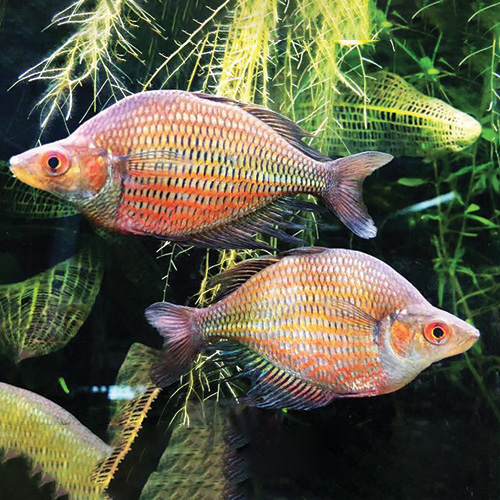
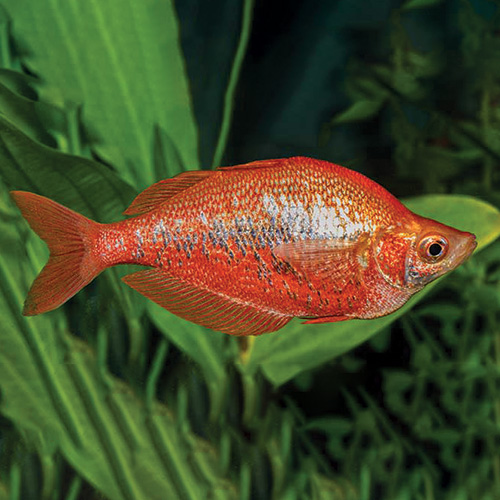
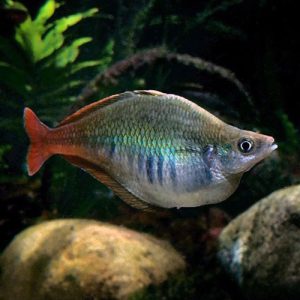
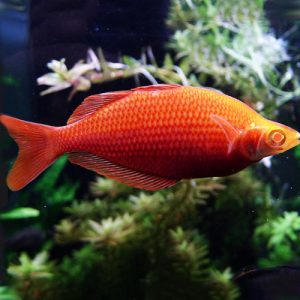

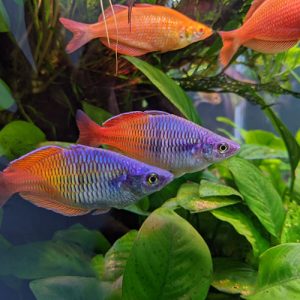
Reviews
There are no reviews yet.